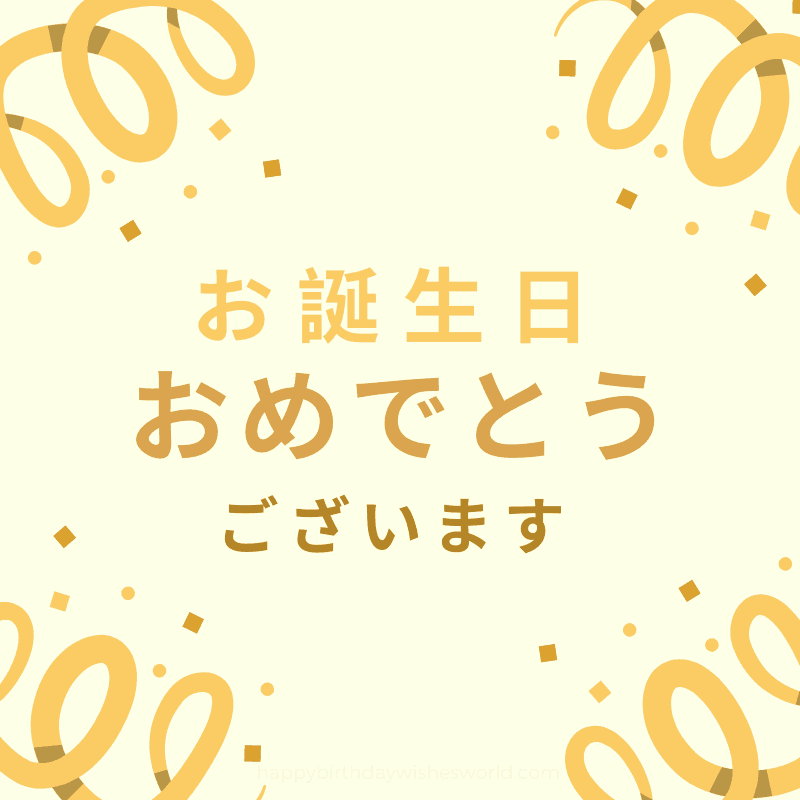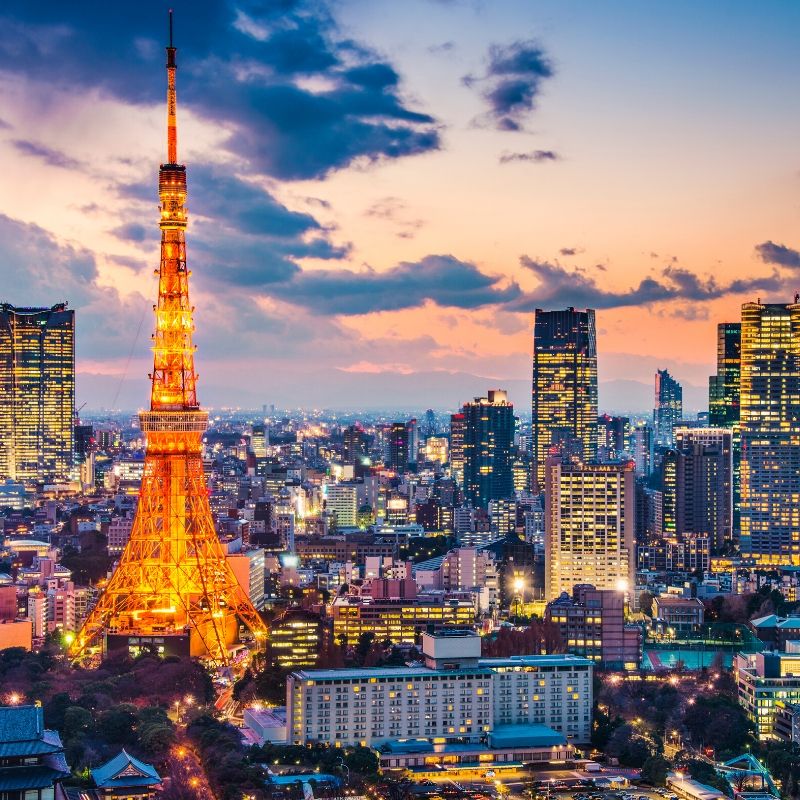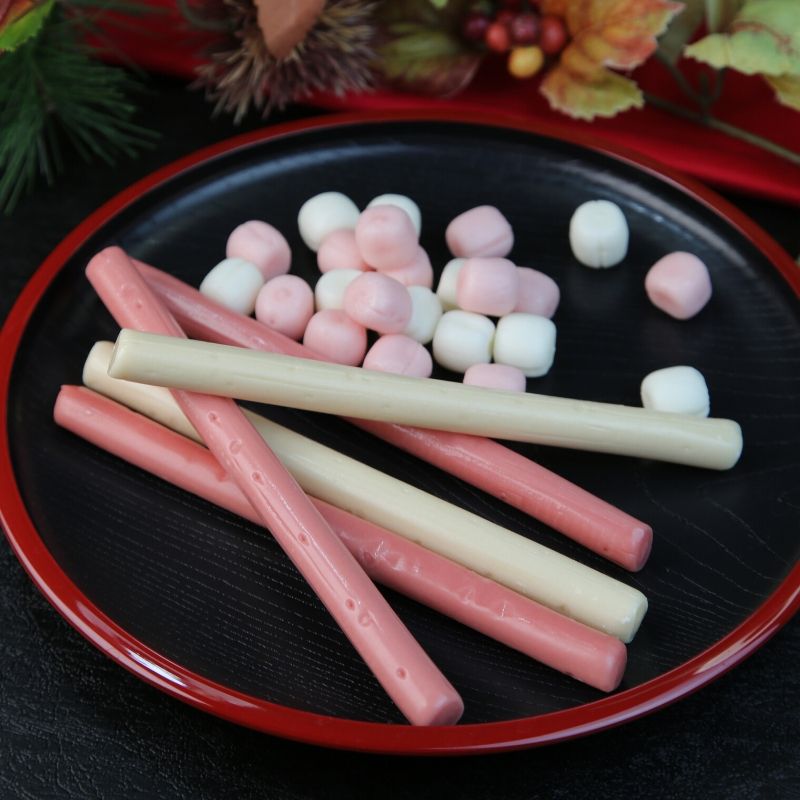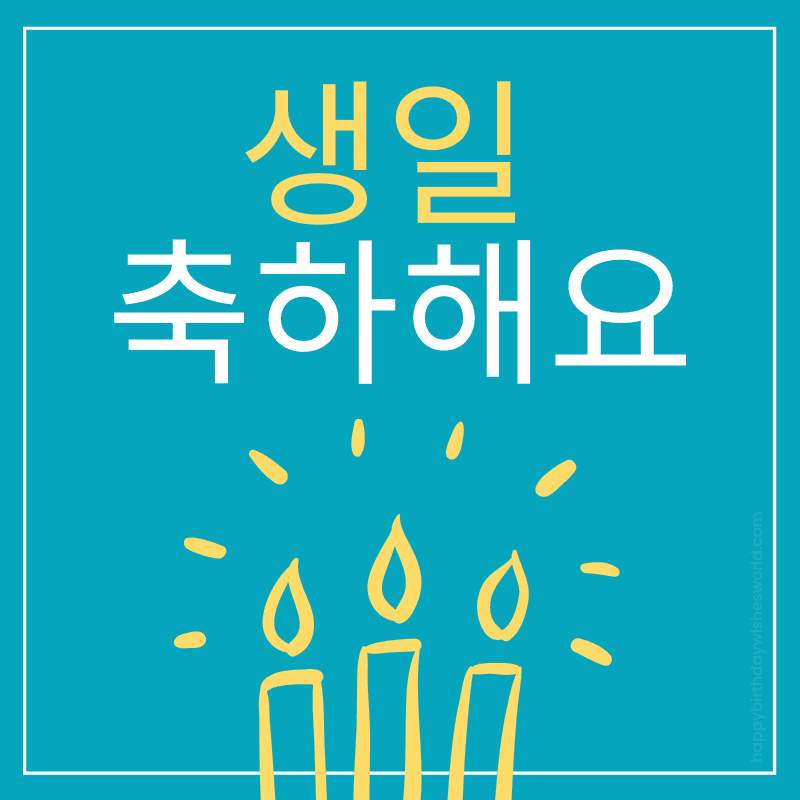Table of Contents Show
Interested in learning how to say happy birthday in Japanese? We are here to help. Below you’ll find an article written by Hayataki Masaharu, who lives in Knagawaken, Japan.
It includes not only how to say happy birthday
in Japanese but also lots of information about how birthdays are celebrated in
Japan.
How to say happy birthday in
Japanese
In
Japanese, “happy birthday” is written “お誕生日おめでとう” (otanjoubi omedetou) or “お誕生日おめでとうございます” (otanjoubi omedetou gozaimasu). They
have the same meaning; the second one is just more polite.
The phrase consists of two parts. “Birthday”
and “congratulation.”
“お誕生日” (otanjoubi) means birthday.
“おめでとう” (omedetou) means congratulations.
So,
where does “おめでとう” (omedetou) come from?
Some
historians say that “おめでとう” came from “Let’s love and cherish.”
“Omedetou” is a word to express your “awwwww” feeling from seeing your loved one happy on his/her birthday.
Here is an image to share of happy birthday in Japanese in a casual way:
And here is an image of how to say happy birthday in Japanese but in a polite way:

No need to send a birthday card
Sending or giving birthday cards is not so common in Japan, even to kids. You can find birthday cards in big stationary stores, but not in small stores. Sending New Years’ cards is way more common in Japan.
Long birthday wishes are also not common in Japan. Long wishes are more common in New Years’ cards.
How to celebrate a birthday in modern
Japan
Now that we’ve looked at how to say happy
birthday in Japanese, let’s look at how to celebrate a birthday in Japan!
You don’t organize your own
birthday party
In Germany and many other European countries, you arrange your own party and pay for everyone, as mentioned in this article about German birthdays.
In Japan, though, you never organize your own
birthday. Your boyfriend, girlfriend, family members, friends, or colleagues
organize your birthday, and you don’t pay a dime.
In fact, you often don’t know whether they are
organizing your birthday or not. Most young people, especially students, prefer
surprise parties. So, a conversion like this takes place.
“Masaharu’s birthday is coming up on the 13th
of February. Are you available on Saturday next week?”
“What does he like? I heard that he does not
like sweets. We can’t buy a cake. What should we do?”
“What kind of food does he like?”
“Should we buy a gift? What’s your budget?”
Even if your friends are organizing a non-surprise party, how they will celebrate your birthday is often kept a secret from you.
How do couples celebrate birthdays
in Japan
In popular sitcoms like Friends, Big Bang
Theory, or How I met your mothers, couples celebrate his or her birthday with
their friends. That’s not so common in Japan.
According to this OZmall’s poll, 63% of women prefer to have an intimate birthday party with their boyfriend or husband, and 16% want big parties.
Girls usually want to celebrate their birthday
in a very romantic way. Dinner with candles at a restaurant in a skyscraper
with a panoramic view of Tokyo at night is many girls’ dream in Japan. A
special experience for the special day.

However, not all girls want something special on their birthday. Surprisingly, 12% prefer to do nothing.
Well… it kind of makes sense. Many Japanese
people work hard for long hours. They would not have the energy to celebrate
their birthday.
Men want more or less the same; this Mynavi poll indicates that most men prefer to stay at home with their girlfriend or wife alone.
If you have a Japanese boyfriend, cook his
favorite dish for him, and his heart, as well as his stomach, will be yours.
Small fashion items such as wallets are a
popular choice of gifts.
How families with kids celebrate
birthdays in Japan
We celebrate kids’ birthdays like in the
United States but on a smaller scale. Most Japanese people live in a 2 to 3
bedroom apartment, so obviously, you cannot have a bouncy-house.
Other than that, and the number of guests, birthday parties for kids in Japan are very similar to the United States. You invite your friends, light candles, the birthday boy/girl blows out the candles, everyone eats cake, and gives him/her a birthday gift. And there will be birthday decorations like balloons in the house.
It’s common to throw such a big party for
smaller kids of 3-9 years old, but not so much for older kids. However, no
matter how old your kids get, a nice dinner, a cake, and a birthday gift are a
must.
How friends celebrate your
birthday in Japan
According to this
poll, the majority of the Japanese people prefer to celebrate friends’
birthdays in restaurants or bars that offer birthday services such as cake,
singing happy birthday, and so on.
For men, it’s not super common to celebrate
friends’ birthdays. In fact, when you search “birthday party ideas for friends”
or “birthday gifts for friends”, you only find articles for girls.
How to celebrate your birthday
alone in Japan
According to this poll, 9% of Japanese people prefer to
spend their birthday alone, treating themselves to a lovely spa, cake, binge-watching
Netflix, or buy themselves a gift.
It makes sense to me. Nearly one-quarter of
Japanese companies require employees to work more than 80 hours of overtime a
month. They would want nothing but rest for their birthday.
Why are Japanese birthday customs
similar to western customs?
I believe you noticed that birthday parties in
Japan are very similar to western ones.
We sing happy birthday songs in English; we
celebrate birthdays with cake and candles. We blow out the candles and make a
wish.
The reason why modern Japanese birthday
traditions are so similar to western birthday customs is Japanese people didn’t
celebrate birthdays on the day of their birth until around 1950. The modern
birthday culture became standard after the American occupation of Japan.
Until the 1950’s, everyone added one year to their age and celebrated their birthday(?) on New Year’s Day.
In the 1950s, the Japanese government established a law to adopt the modern age system. New Year’s Day is still celebrated as a New Year’s Day but not as everyone’s birthday.
Traditional Japanese ways of celebrating birthdays
So, celebrating birthdays was not common at
all in Japan until Western influence came to Japan in the 1950s.
However, it does not mean we didn’t celebrate
aging and growing at all. Here are some other more traditional Japanese
birthday traditions.
Everyone adds one year to their age at the beginning of the New Year
In
Japan, we had a traditional age counting culture called “数え年 (kazoe doshi).”
Newborns were considered a year old when they
are born, and everybody adds one year to their age at New Years.
The third, fifth, and seventh
birthdays are special
We celebrate the 3rd, 5th, and 7th birthdays
in a very traditional way.
Kids
put on traditional Japanese formal wear called “着物” (kimono), visit a Shinto shrine, and
eat traditional Japanese candy called “千歳飴” (Chitose-ame) which literally means
1000 years old candy :D. Of course, the candy is not 1000 years old. Parents
give this candy to wish that their kids will live too long.

Chitose-ame is usually 15cm to 50cm long. The
average height of 3 years old is 90cm in Japan, so 15cm or 50cm is really long
for them.
Chitose-ame is long, expressing the parents’
wish for their child to live a long life.
This
traditional culture is called “七五三” (Shichi-Go-San). It means “7, 5, and
3”. We don’t usually celebrate 七五三 on kids’ birthdays. Instead, we
celebrate on November 15th because the ruler of the country at the time started
this tradition on November 15th.
So why three, five, and seven years old? It’s
because, at the age of three, kids begin to understand the language, and at the
age of five, they grow their intelligence, and at the age of seven, their teeth
grow. So, three, five, and seven years are considered three of the
turning-points in kids’ life.
Sixtieth birthdays are special
The
60th birthday is special in Japan, and it is called “還暦” (kan-reki).
Kanreki
means something like completing a cycle and back to the year you were born. “還” means “completing a cycle and
returning” and “歴” means calendar or years.
This
comes from the ancient Japanese calendar. We counted each year with 12
different zodiac animals. It is called “干支” (Eto).
Eto
is combined with one of “十干” (Jikkan), which indicates time and
space.
To
this day, all Japanese people know the Eto of the year. For example, 2020 is a
year of mice, and mice are a popular design in New Years’ cards called “年賀状 (Nengajo)”.
However, Jikkan is forgotten in Japan.
The combinations are 60 in total, and that’s
why kanreki completes a cycle.
This Eastern philosophy is a complex mixture
of science, philosophy, tradition, and superstition.
Eto, the Japanese/Chinese zodiac, was used as an indication of time and space. For example, 2020 is a year of mice (子). Mice is north, 12:00 midnight, January, and fire in Wuxang (5行).
Jikkan was also an indication of time and space. For example, 2020 is the year of Kanoe (庚). Kanoe is gold in Wuxang, and it represents a state in which the growth of the plant stops and tries to change to a new shape.
Very few people actually believe Chi in Japan,
but the philosophy of Chi has a deep influence on Japanese culture.
Giving a red vest and a hat is a traditional
custom of Kanreki. The color red is believed to have a protective effect. This
protective effect is also why people would put red clothes on newborn babies.
Since the Kanreki is returning to the year
that you are born, people give the red hat and the red vest to reborn as a 60
years old baby.
Nowadays, the vest and the hat are not very popular choices. Sixty years old is very young in Japan, so people give more fun things like a red tie, shirt, scarf or even underwear.
Now that we’ve looked at how to say happy birthday in Japanese, how about some other birthday wishes?
Happy Birthday Images
200 Belated Birthday Wishes









